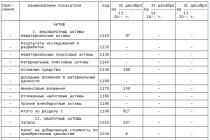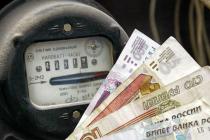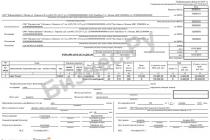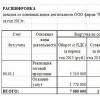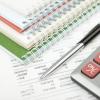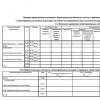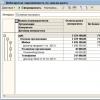Each buyer is responsible for accounting for his own transactions, as he is required to do so by tax law. The purchase book is a special type of reporting, which reflects all operations performed to provide or receive goods / services for a certain period. It is necessary for the correct calculation of profits and in order to calculate.
For the same purposes, a sales book has been created - a similar document that the Federal Tax Service requires to submit for verification on a quarterly basis. In case of improper maintenance of the purchase book or the sales book, the entrepreneur or intermediary may be punished.
All taxpayers are required to keep a purchase book, except for:
- exempt from value added taxes;
- those individual entrepreneurs who carry out activities that are not subject to VAT;
- individual entrepreneurs who use the simplified taxation system.
In fact, purchase and sales books are an integral part of the taxpayer's record. They are used to calculate the amount of value added tax, which is indicated in.
Since VAT is paid on the difference between income and expenses, the maintenance of these documents is fundamental in the formation of reports sent to the tax service.
Who keeps the report
The book of purchases must be drawn up by all taxpayers using DOS without exception.
The opportunity not to keep it is available only to the category of entrepreneurs exempted from taxation (for example, those submitting a “zero declaration” for the reporting period). In addition, it is also necessary for tax agents who work on a simplified taxation system. The use of UTII also requires the preparation of such reports in full.
Keeping books of purchases and sales is mandatory: its period is 4 years. It is possible to send an electronic version only in printed form - this is a significant drawback, it greatly affects the convenience of reporting.
Rules for filling out an additional sheet of the purchase book when calculating VAT
There are uniform rules for filling out sections for each additional sheet, regardless of the reason for its compilation.
It should contain:
- its serial number;
- brief information about the entrepreneur who carried out the operation and data about the buyer;
- and checkpoint;
- designation of the reporting period, as well as the current year of the operation;
- designation of the reporting period in which the invoice was issued;
- date of creation of the additional sheet.
At the bottom of each form there is a column “Total”, where it is necessary to transfer all information for the reporting period. All data on adjustment invoices, if any, are also recorded here. By analogy, all the data indicated in lines 7-12 are transferred from the previous shopping list to the next (additional) one.

Also, the form of an additional sheet can be used to enter information on canceled or corrective invoices, if any, in the reporting tax period. In this case, it is drawn up according to a different algorithm.
| Column number | Specified data |
| 1 | Record number according to the data on the canceled invoice |
| 2 | The serial number of the invoice and the date of its creation |
| 2a | The date of correction of the invoice, which are indicated in the corresponding entry about it on the main sheet of the purchase book in column “1a”. If there is no such information in the corresponding line, it is left empty. |
| 2b | The number and date of the corrective invoice, which is indicated in column 1b of it. If there is no information in it, it is not filled. |
| 2v | Number and date of the correction made to the corrective invoice from column 1a |
| 3 | Day, month and year in which the invoice was paid |
| 4 | Day, month and year when taxpayers received property rights, works or services |
| 5 | Brief information about the seller (name of individual entrepreneur, full name, etc.) |
| 5a | Tax identification number belonging to the provider of services or goods |
| 5 B | PPC to a service provider (goods, property rights, etc.) |
| 6 | Code of the country in which the goods were produced and the number of the customs declaration according to which they were imported into the territory of the Russian Federation (for goods that were not produced on its territory) |
| 7 | The total value of the goods or services specified in the invoice. Or (if it is issued for prepayment or services) the amount of funds that were transferred by the buyer to the seller. It is paid including value added tax. Also, if it is necessary to indicate an increase or decrease in the price of goods (services), it is worth filling in the columns “Total decrease” or “Total increase” from the main sheet. |
| 8a | The total price of all goods or services that are subject to tax at the rate of 18%, but excluding value added tax (VAT). If necessary, to reflect the decrease or increase in this indicator in a similar way, the lines “Total decrease” or “Total increase” are used. Also in this case, information from column 5 of the invoice of the corrective type is indicated |
| 8b | The total price of all goods or services that are subject to taxation (18%), or prepayment for them. An approximate indicator is also indicated here if the calculation is made by the calculation method. Indication of an increase and decrease in the cost of services and goods is carried out in a similar way. In this case, it is mandatory to indicate the data from the 8th column of the invoice |
| 9a | The total value of purchased goods and services that are subject to tax at a rate of 10%. In this case, value added tax is not taken into account, and the transfer of information from column 5 of the document is mandatory. |
| 9b | The amount of VAT levied on the goods or services specified in column 9a. Contains the same information as column 8 of the invoice |
| 10 | The total value of all purchased goods, which is not subject to value added tax |
| 11a | The total price of purchases taxed at 20 percent |
| 11b | The total amount of value added tax levied on goods and services indicated in column 11a. |
| 12 | The total amount of funds spent on purchases and exempted from taxes |
Making a purchase book is the responsibility of not only individual entrepreneurs, but also a number of third parties (intermediaries) working with them. This reporting is the basis for checking the correctness of the calculations in the tax return, and the compulsion of its preparation does not depend on the applied taxation scheme.
The main purpose of the purchase book and sales book is the correct calculation of VAT and tax payable, respectively, which imposes great responsibility on its leading entrepreneur or accountant. All information from them will then be duplicated in the declarations submitted to the Federal Tax Service and verified by service employees.
An additional sheet of the purchase book when calculating VAT is issued in case of cancellation or adjustment of the amount indicated in the invoice. Its creation requires the transfer of all relevant information about the buyer and seller, as well as a description of the transaction for each type of goods (regarding their taxation).
All data from invoices are duplicated and supplemented with calculations for all available tax rates for goods and services.



